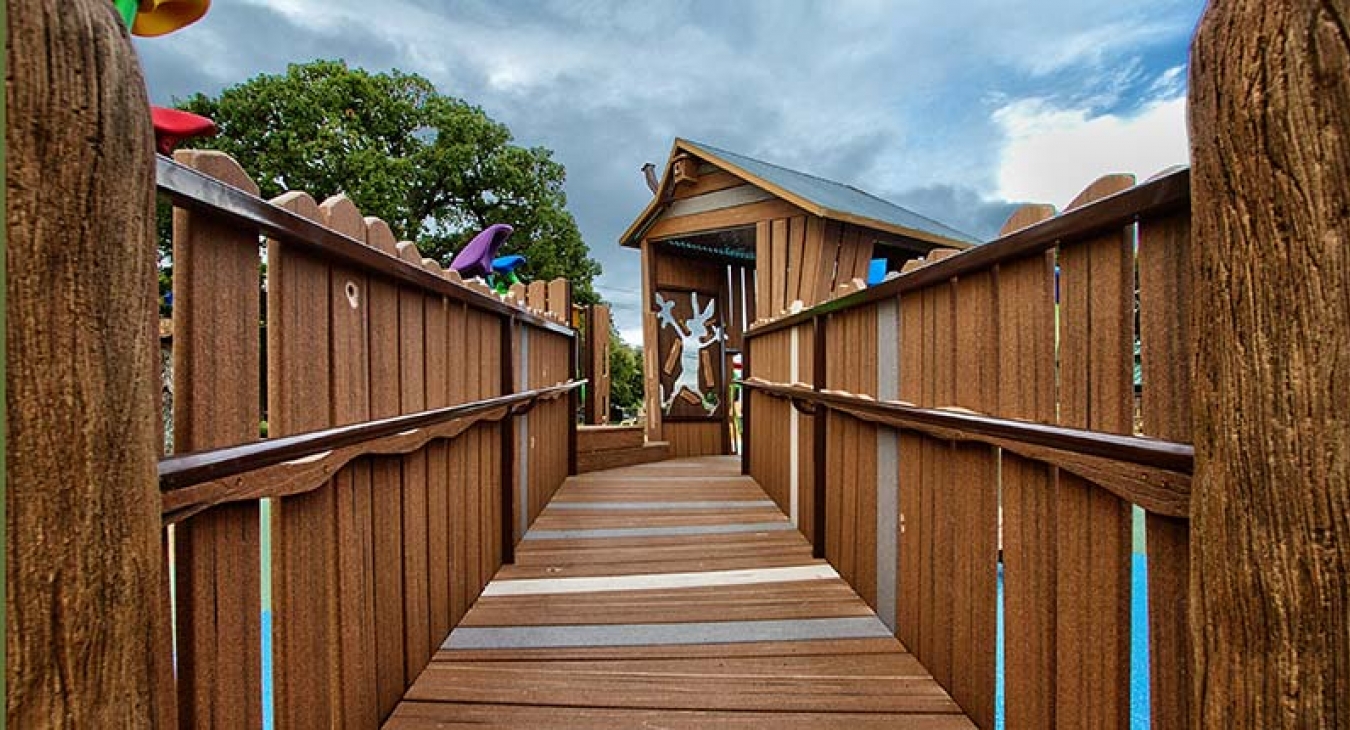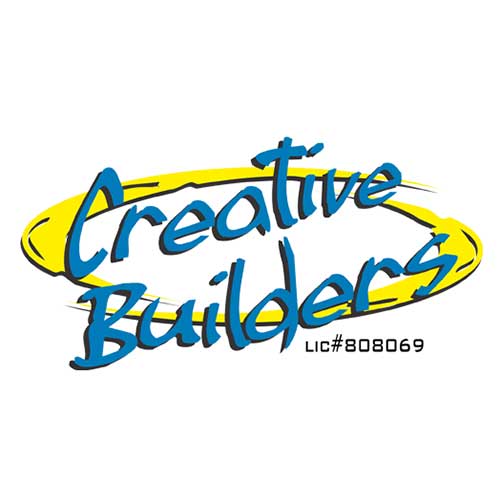Our kids deserve more. They deserve a play environment that grabs them when they walk by, makes their jaw drop, and shakes them silly instead of one that says, “Hey, I’m over here if you’re bored.”
Playground designers are up against some tough competition, and originality is more important than ever before. Kids have seen it all these days from the virtual realities on iPad games and apps to the CGI in a Pixar film. They have been raised to crave something unique, different, and the latest new thing to knock their socks off. They’re looking for something just as stimulating to pull them away from their gadgets, get them moving, and demand rigorous play. And the reality is they need exercise more than ever. The U.S. continues to battle the epidemic of obesity in our youth. We need to give these kids a reason to get moving.
With a little “out of the box” thinking by a team of talented designers that push the limits, the playground can be that amazing place it once was. And not just for some kids, but kids with disabilities too. All kids of all abilities deserve an environment that draws them back into physical play. For years traditional playground design has lacked variation with not enough options to engage creative play. The tired, snap together, primary color playgrounds with the limitations of the post and deck systems are being left behind by companies who are increasingly looking for more innovative ways to encourage play.
Define Original
Google the word “original” and you’ll find a host of definitions, most of which when boiled down, share the same common idea: created first, directly and personally by a particular artist; not a copy or imitation.
“Personally” is the keyword in the definition that defines really good designers. They put their hearts into being original, take their creations very personally, and pride themselves on truly unique design. “Copy” and “imitation” are swear words to a designer passionate about true original design. A truly original design cannot be an adaption of something that’s been done before. It just can’t. Play environments must be motivated by life, art, people, but mostly by kids. Today’s play designer needs to push the envelope and stick with that “‘out there” idea. It’s like this, an original unique design spawns from that crazy idea someone had while lying in bed at 3 am and the drive and passion to get up and make it happen.
It has been great to see more and more themed playgrounds hitting the scene in recent years. In theming, research is critical. Great designers look into the people and history of a town and work with the existing landscape. It’s always been known that a custom theme can give a play environment more meaning. The problem with most post and deck playgrounds is that they are pre-programmed and leading. You can see this playground in your head if you stop and think: it’s the same thing every time. They lead the kid up the standard ladder across the standard bridge down the standard slide.
Parks and recreation departments and city planners are starting to move towards more interesting custom themes that tend to create a deeper connection for kids, adults, and communities. Good playground design listens to kids, but doesn’t forget about adults. Before kids can have the opportunity to visit the park, their parents need to see added value and decide whether or not they want to drive their kids to that particular playground. Theming can provide that extra draw and make it more of an experience rather than simply “something to do.” Whether realistic themes, such as a native wildlife and sea vessels, or fantastical, such as the enchanted forest or space aliens, themed playgrounds are 1) more engaging to the child and 2) viewed as more worthwhile to an adult. A theme can better immerse the child into an alternate universe through something that will be meaningful and special. In an age of technology keeping kids indoors, we as communities need to make the offer more attractive. We are at war with inactivity - it’s time to design and build playgrounds that will get kids outside.

Immersive Design
A great theme is a good start, and it must be amazing to keep kids’ interest. The idea behind immersive play is to design an environment where the children will become “lost” in play. Walt Disney is the originator of the immersion design technique. Immersion is the state of consciousness where physical self-awareness is diminished or lost in an engrossing and engaging environment. The idea is that the child will become part of the alternate reality and lose a sense of reality. Instead of equipment to merely “play on,” playgrounds should be designed to be worlds to “play in,” and there is a huge difference between the two.
In a gadget and game driven society the immersive qualities of the playground are as critical as ever. The reality is our children as young as two years old tote their parents’ iPads, and five year olds have their own iPods. We need to show kids that physical active play can be as colorful and imaginative as Angry Birds or Temple Run. While sensory rich, these apps and games cannot match the benefit of raw emotion and activity from physically interacting with people. Forward-thinking designers need to understand that their competitive set has broadened to include gadgets, apps, online group-gaming, face timing, and texting friends.
So what are the factors critical to achieving an immersive environment? Immersive environments emerge from designers who take the time to roll up their sleeves, dig in, and research. Playground designers need to ask a lot of questions and think like kids. If designing an enchanted forest, how do kids move through that forest, what would they like to see, and how would it look to them? A typical design might incorporate small statues of forest critters, and this makes complete sense, however, an immersive design will incorporate trees that swallow the kids whole, hidden critters inside a peek-hole, and forest sounds. Immersive environments are designed to be sensory rich incorporating all the right materials, textures, colors, sounds, and activities in order to bring the play environment to life. Every single element needs to contribute to an intense level of immersive play. If it doesn’t pass the test, then it doesn’t fit the immersive play environment mold and should be axed. These environments may take a bit longer to plan, but at the end of the day they offer a better pay-out for playground owners as they are visited more often and generate more activity for years to come. A truly immersive experience can encourage children to forget about their iPods and their parents sitting on the bench checking their phones, and can, in fact, draw parents into the play environment.
The right mix of materials will breathe life into an environment. Bent metal and molded plastic can only do so much. Good playground design explores a wide range and combination of materials including concrete, GFRC (glass fiber reinforced concrete), steel, sculpting epoxy, composite wood, various plastics, and custom colors. GFRC is a wonderful material as it can be shaped and molded to give realistic textures and color. It allows accurate detail of a fairy’s wings or the hair of a buffalo. Color is also extremely important. It might take mixing 17 different reds, oranges, and yellows to accurately achieve the fire from a fire breathing dragon.

Today kids spend many more hours in front of a computer than they do with another human being. According to the CDC, obesity prevalence among children and adolescents has almost tripled since 1980 and more than one-third of U.S. adults are obese. An immersive play environment encourages interaction and demands physical play between kids. These healthy worlds of physical interaction as young children will set the stage for physical activity later in life and ensure we raise well-adjusted active adolescents and adults.
Removing Barriers
 All kids deserve a play environment that will blow their minds and get them moving. The focus in recent years has been to move towards play design that allows all kids of all abilities to play everywhere. One or two accessible elements is old-think; it’s just not enough for our kids these days with such a wide spectrum of abilities. It is important to shift our thinking to wholly inclusive play environments where we offer more than just a simple ramp or accessible area for the child with a disability. That’s not to say a sea of ramps is a better alternative. Rather, inclusive design needs to allow all of our children, abled and disabled, the ability to access the same activities and adventures. This is called seamless accessibility integration which fosters environments where all kids can play together everywhere.
All kids deserve a play environment that will blow their minds and get them moving. The focus in recent years has been to move towards play design that allows all kids of all abilities to play everywhere. One or two accessible elements is old-think; it’s just not enough for our kids these days with such a wide spectrum of abilities. It is important to shift our thinking to wholly inclusive play environments where we offer more than just a simple ramp or accessible area for the child with a disability. That’s not to say a sea of ramps is a better alternative. Rather, inclusive design needs to allow all of our children, abled and disabled, the ability to access the same activities and adventures. This is called seamless accessibility integration which fosters environments where all kids can play together everywhere.
A recently constructed play environment, Casey’s Clubhouse in Grapevine, TX, displays seamless accessibility integration beautifully. This environment includes an oversized universally accessible clubhouse with interactive elements, slides built from materials that eliminate static electricity so as not to zap cochlear implants, and play pods that address overstimulation in children with autism, and these are just a few. Experience can be gained through partnerships with organizations that address inclusive play such as Unlimited Play and Miracle League. The common goal is to make the environment as entirely inclusive as possible.
Sustainable Materials / Environmental Footprint
Being in the business of children’s futures, it should also be the responsibility of playground designers to make the most sustainable choices possible. When playground designers select sustainable materials and choose responsible processes, everybody wins. Many materials are available that have been recycled such as recyclable steel as well as composite decking and wood materials made with 95% recycled materials. The process of producing GFRC produces zero chemical off-gas or byproducts. When feasible, designs can use repurposed materials; some materials, however, have to be new for structural, safety, and durability purposes. When possible, it is best to select as many sustainable materials as possible. It would be hypocritical for a company to be in the business of caring for children if they did not care for the planet they leave them with in the end.
Future of Play Design
Years ago playgrounds were designed as a box. Here’s a 50’x70’ area, now make your playground fit in that box. Cutting edge designers try to see how it can be done in a different way. They look at how the play can flow through the park with unique twists and turns to encourage movement along the way. More and more designs are starting to mess with traditional spatial arrangements and even incorporate play in elevation changes. Forget the retaining wall - build the playground into the side of the hill. Designers also realize that play isn’t just physical; it uses all the senses. It can start visually at the entrance of the park and be designed to have no end point. At Walker Mill Regional Park, the path to the play area has interactive visual, audible, and physical elements starting at the parking lot, turning the whole park into a playful experience.
 If play designers want to compete in the years ahead, they’ll also need to embrace technological advancements rather than deny them. They need to integrate the technology and electronics that are available and turn them into physical play. Since kids love video games, incorporate them into the playground but make kids move. They can include elements of custom lights, sounds, and activities that keep kids on the go. Examples include Playworld Systems’ Neos 360 electronic interactive system which gets kids moving while building auditory and spatial awareness as well as Imagination Playground foam blocks to encourage hands-on collaboration in play. Cre8Play’s NFL Play60 KidZone obstacle course for the Carolina Panthers features an advanced sensor 40 yard dash timing system and a custom Pep Talk station with recorded messages such as “Be smart, stay hydrated because you worked your tail off!” from Panthers’ players. Carolina Panthers' Director of Community Relations described the Play60 environment as “reinventing what a playground can be.” He said that kids are drenched with sweat-soaked shirts when they finally leave the park. This is music to the play designers’ ears as they’ve just made kids have more physical fun than they thought they could ever have. Play design needs to look forward with the idea that “good enough” is no longer good enough. If you start a project and it looks good, be prepared to shift gears fast and quickly get to awesome.
If play designers want to compete in the years ahead, they’ll also need to embrace technological advancements rather than deny them. They need to integrate the technology and electronics that are available and turn them into physical play. Since kids love video games, incorporate them into the playground but make kids move. They can include elements of custom lights, sounds, and activities that keep kids on the go. Examples include Playworld Systems’ Neos 360 electronic interactive system which gets kids moving while building auditory and spatial awareness as well as Imagination Playground foam blocks to encourage hands-on collaboration in play. Cre8Play’s NFL Play60 KidZone obstacle course for the Carolina Panthers features an advanced sensor 40 yard dash timing system and a custom Pep Talk station with recorded messages such as “Be smart, stay hydrated because you worked your tail off!” from Panthers’ players. Carolina Panthers' Director of Community Relations described the Play60 environment as “reinventing what a playground can be.” He said that kids are drenched with sweat-soaked shirts when they finally leave the park. This is music to the play designers’ ears as they’ve just made kids have more physical fun than they thought they could ever have. Play design needs to look forward with the idea that “good enough” is no longer good enough. If you start a project and it looks good, be prepared to shift gears fast and quickly get to awesome.



















Liability
I am so impressed with the talent and creativity that I see here with this company...I am just amazed. But I have to be realistic. I am from a City located in California and our City is a member of JPIA which provides liability insurance and risk management. Is risk management taken into consideration when designing playgrounds? Risk management and liability have taken the "fun" out of "play" to some degree. I am hopeful that your company can find a balance and continue to create play areas that encourage our kids to move and engage...not just physically but mentally as well.
Add new comment